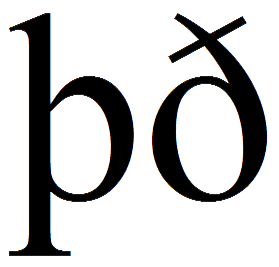
In Old English and Middle English
there were two letters that we don’t use today: Þ and Ð (called thorn
and eth—written in lowercase as Þ and ð). Thorn was the hard th
sound, like you hear in the word then; eth could be used for the soft th
sound, as in thin, but could also be used for the hard th.
Eth slowly disappeared from English writing, falling out of use by the year
1300. Thorn lasted a while longer, maybe another century, but its demise
was hastened by the popularity of printing. Signs and handbills were
printed on paper with sets of wooden blocks. The best blocks came from
Germany and Italy, where the languages don’t have the th sound at all,
so these sets included no thorn or eth blocks. To fill the need of the
missing thorn, printers would just use the letter Y instead. This is why
you would often see medieval signs like “Ye Olde Bakery”. This is just
because the printers couldn’t print “Þe Olde Bakery”! Of course they
could paint signs with any letters they wanted, but as printed material grew
more common, so did ye. If you lived in medieval times and could
read, you knew this was pronounced the way we pronounce the today.
The letters eth and thorn are
still used in modern Icelandic.
Þat’s all, folks.


Comments